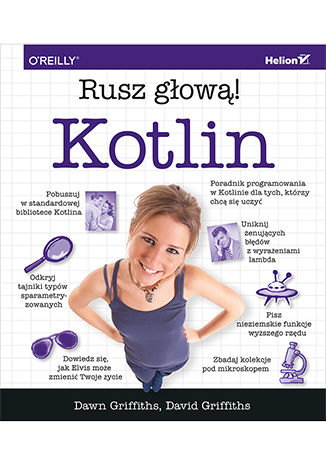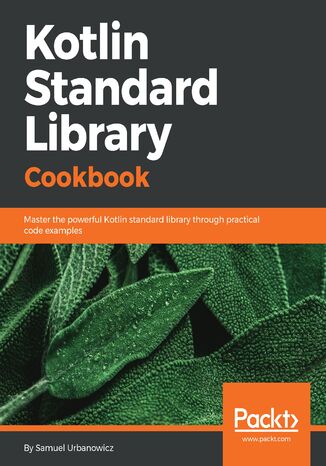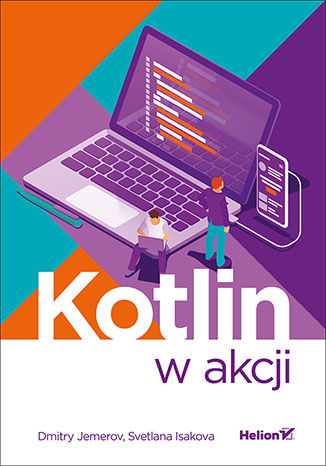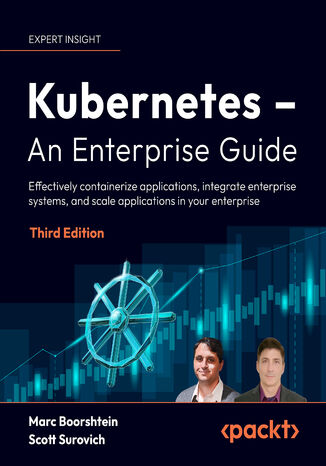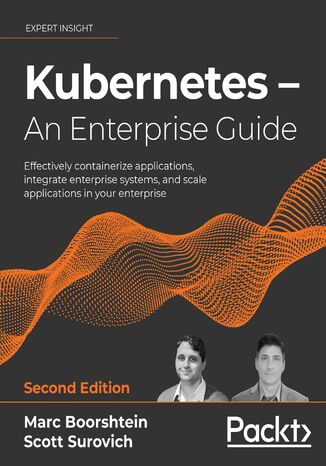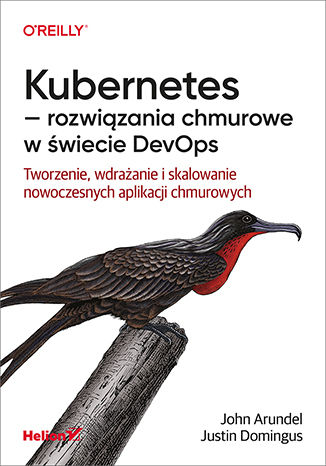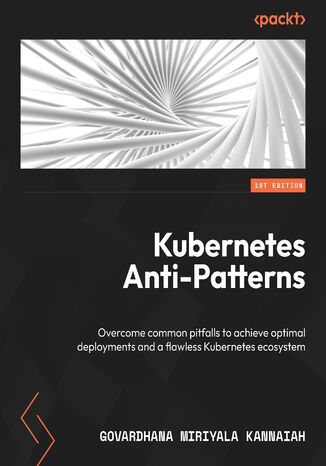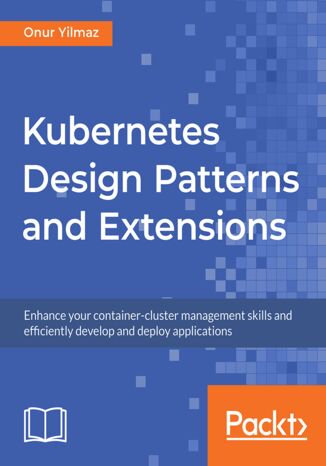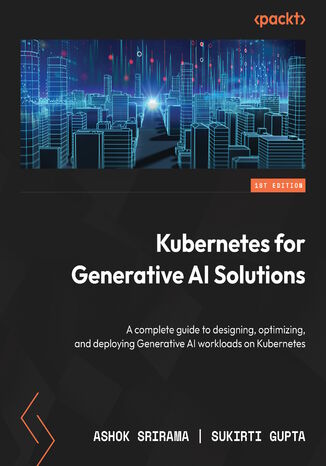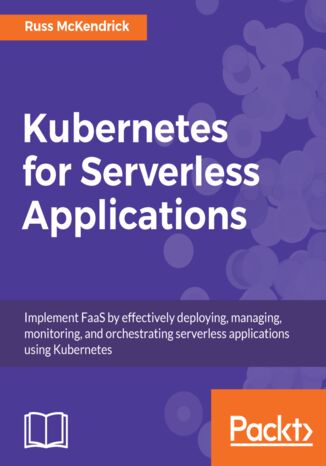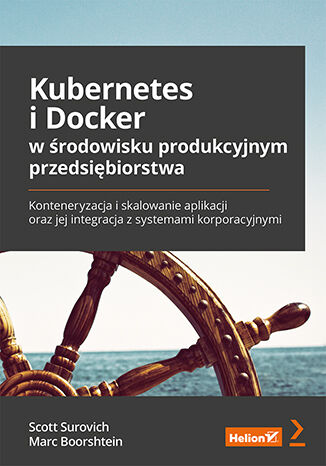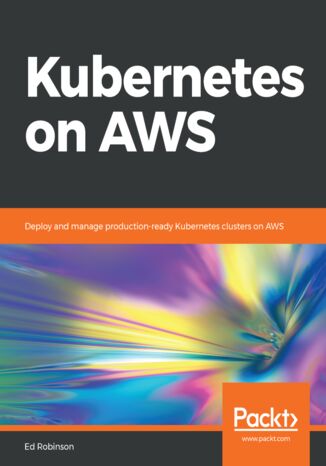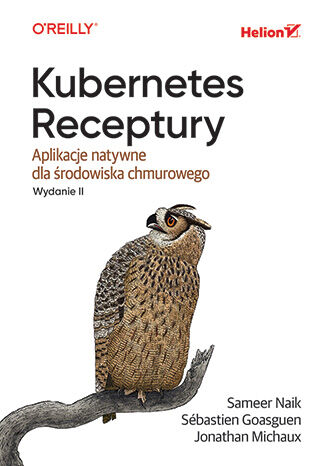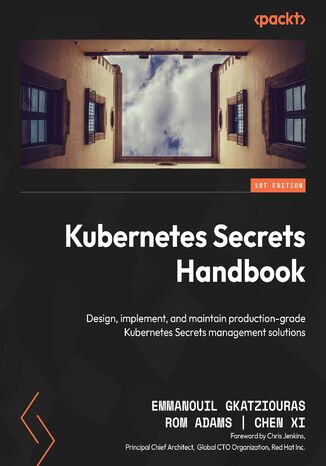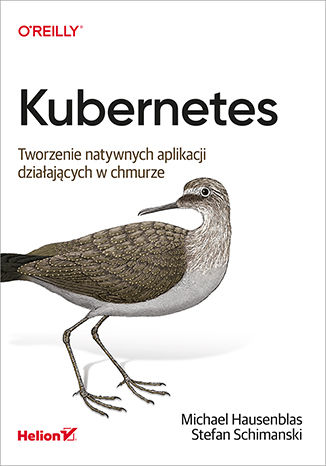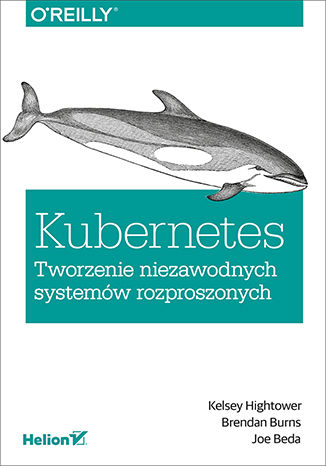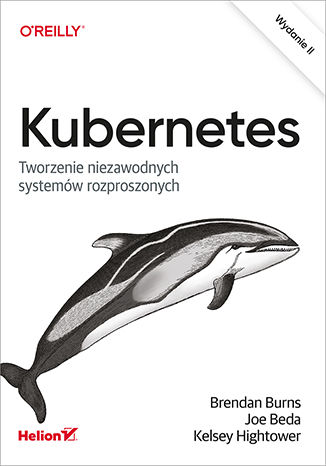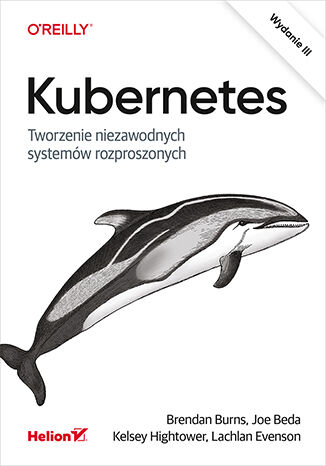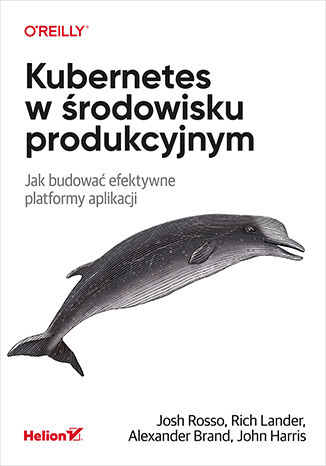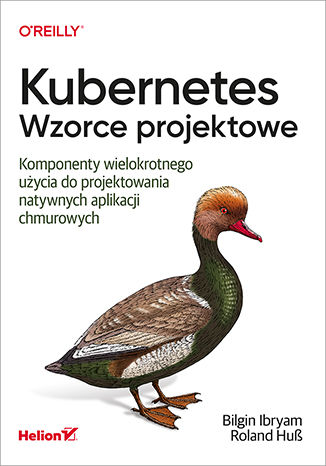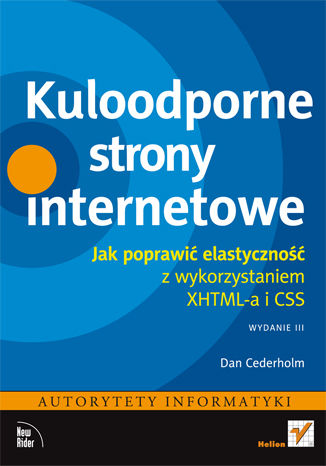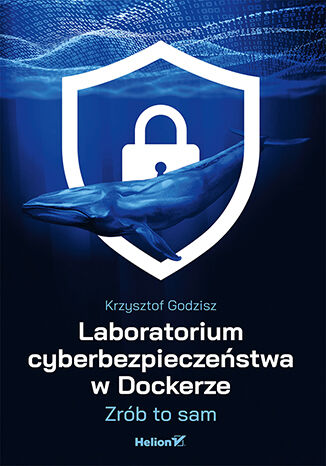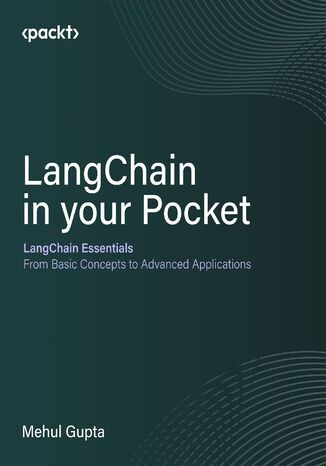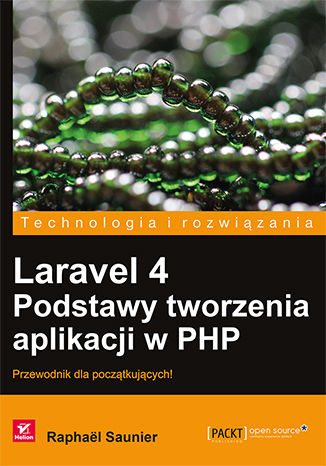Categories
-
- Bitcoin
- Businesswoman
- Coaching
- Controlling
- E-business
- Economy
- Finances
- Stocks and investments
- Personal competence
- Computer in the office
- Communication and negotiation
- Small company
- Marketing
- Motivation
- Multimedia trainings
- Real estate
- Persuasion and NLP
- Taxes
- Social policy
- Guides
- Presentations
- Leadership
- Public Relation
- Reports, analyses
- Secret
- Social Media
- Sales
- Start-up
- Your career
- Management
- Project management
- Human Resources
-
- Architektura i wnętrza
- Health and Safety
- Biznes i Ekonomia
- Home and garden
- E-business
- Ekonomia i finanse
- Esoterecism
- Finances
- Personal finance
- Business
- Photography
- Computer science
- HR & Payroll
- For women
- Computers, Excel
- Accounts
- Culture and literature
- Scientific and academic
- Environmental protection
- Opinion-forming
- Education
- Taxes
- Travelling
- Psychology
- Religion
- Agriculture
- Book and press market
- Transport and Spedition
- Healthand beauty
-
- Office applications
- Data bases
- Bioinformatics
- IT business
- CAD/CAM
- Digital Lifestyle
- DTP
- Electronics
- Digital photography
- Computer graphics
- Games
- Hacking
- Hardware
- IT w ekonomii
- Scientific software package
- School textbooks
- Computer basics
- Programming
- Mobile programming
- Internet servers
- Computer networks
- Start-up
- Operational systems
- Artificial intelligence
- Technology for children
- Webmastering
-
- Antology
- Ballade
- Biographies and autobiographies
- For adults
- Dramas
- Diaries, memoirs, letters
- Epic, epopee
- Essay
- Fantasy and science fiction
- Feuilletons
- Work of fiction
- Humour and satire
- Other
- Classical
- Crime fiction
- Non-fiction
- Fiction
- Mity i legendy
- Nobelists
- Novellas
- Moral
- Okultyzm i magia
- Short stories
- Memoirs
- Travelling
- Narrative poetry
- Poetry
- Politics
- Popular science
- Novel
- Historical novel
- Prose
- Adventure
- Journalism, publicism
- Reportage novels
- Romans i literatura obyczajowa
- Sensational
- Thriller, Horror
- Interviews and memoirs
-
- Archeology
- Bibliotekoznawstwo
- Cinema studies
- Philology
- Polish philology
- Philosophy
- Finanse i bankowość
- Geography
- Economy
- Trade. World economy
- History and archeology
- History of art and architecture
- Cultural studies
- Linguistics
- Literary studies
- Logistics
- Maths
- Medicine
- Humanities
- Pedagogy
- Educational aids
- Popular science
- Other
- Psychology
- Sociology
- Theatre studies
- Theology
- Economic theories and teachings
- Transport i spedycja
- Physical education
- Zarządzanie i marketing
-
- Health and Safety
- History
- Road Code. Driving license
- Law studies
- Healthcare
- General. Compendium of knowledge
- Academic textbooks
- Other
- Construction and local law
- Civil law
- Financial law
- Economic law
- Economic and trade law
- Criminal law
- Criminal law. Criminal offenses. Criminology
- International law
- International law
- Health care law
- Educational law
- Tax law
- Labor and social security law
- Public, constitutional and administrative law
- Family and Guardianship Code
- agricultural law
- Social law, labour law
- European Union law
- Industry
- Agricultural and environmental
- Dictionaries and encyclopedia
- Public procurement
- Management
-
- Africa
- Albums
- Southern America
- North and Central America
- Australia, New Zealand, Oceania
- Austria
- Asia
- Balkans
- Middle East
- Bulgary
- China
- Croatia
- The Czech Republic
- Denmark
- Egipt
- Estonia
- Europe
- France
- Mountains
- Greece
- Spain
- Holand
- Iceland
- Lithuania
- Latvia
- Mapy, Plany miast, Atlasy
- Mini travel guides
- Germany
- Norway
- Active travelling
- Poland
- Portugal
- Other
- Przewodniki po hotelach i restauracjach
- Russia
- Romania
- Slovakia
- Slovenia
- Switzerland
- Sweden
- World
- Turkey
- Ukraine
- Hungary
- Great Britain
- Italy
-
- Philosophy of life
- Kompetencje psychospołeczne
- Interpersonal communication
- Mindfulness
- General
- Persuasion and NLP
- Academic psychology
- Psychology of soul and mind
- Work psychology
- Relacje i związki
- Parenting and children psychology
- Problem solving
- Intellectual growth
- Secret
- Sexapeal
- Seduction
- Appearance and image
- Philosophy of life
-
- Bitcoin
- Businesswoman
- Coaching
- Controlling
- E-business
- Economy
- Finances
- Stocks and investments
- Personal competence
- Communication and negotiation
- Small company
- Marketing
- Motivation
- Real estate
- Persuasion and NLP
- Taxes
- Social policy
- Guides
- Presentations
- Leadership
- Public Relation
- Secret
- Social Media
- Sales
- Start-up
- Your career
- Management
- Project management
- Human Resources
-
- Antology
- Ballade
- Biographies and autobiographies
- For adults
- Dramas
- Diaries, memoirs, letters
- Epic, epopee
- Essay
- Fantasy and science fiction
- Feuilletons
- Work of fiction
- Humour and satire
- Other
- Classical
- Crime fiction
- Non-fiction
- Fiction
- Mity i legendy
- Nobelists
- Novellas
- Moral
- Okultyzm i magia
- Short stories
- Memoirs
- Travelling
- Poetry
- Politics
- Popular science
- Novel
- Historical novel
- Prose
- Adventure
- Journalism, publicism
- Reportage novels
- Romans i literatura obyczajowa
- Sensational
- Thriller, Horror
- Interviews and memoirs
-
- Philosophy of life
- Interpersonal communication
- Mindfulness
- General
- Persuasion and NLP
- Academic psychology
- Psychology of soul and mind
- Work psychology
- Relacje i związki
- Parenting and children psychology
- Problem solving
- Intellectual growth
- Secret
- Sexapeal
- Seduction
- Appearance and image
- Philosophy of life
- Ebooks
- Computer science
- Programming
Programming
Our online library contains some publications, thanks to which programming will have no secrets from you. The books included here will introduce you to such languages as HTML, JavaScript, Python and CSS. Due to them, you will also learn how to create effective algorithms, design mobile applications or take care of the correct information architecture on websites.
Dawn Griffiths, David Griffiths
Kariera Kotlina nabrała rozpędu, gdy w 2017 roku na konferencji Google ogłoszono go jednym z oficjalnie wspieranych języków programowania aplikacji dla Androida. Jest lubiany za zwartą składnię, elastyczność i ścisłą integrację z kodem Javy. Oczywiście odpowiada też kryteriom nowoczesnego i innowacyjnego języka programowania. Jest bardzo dobrym wyborem dla każdego, kto chce się stać profesjonalnym programistą, ale też osoby programujące hobbystycznie będą zadowolone z jego możliwości. Problemów z tym idealnym językiem programowania jest niewiele: trzeba poznać Kotlina, zrozumieć kilka niuansów i nauczyć się kodowania... Ta książka, podobnie jak inne pozycje z serii Rusz głową!, została przygotowana zgodnie z jedyną w swoim rodzaju metodyką nauczania wykorzystującą zasady funkcjonowania ludzkiego mózgu. Dzięki niej nauczysz się myśleć jak najlepsi programiści i niepostrzeżenie zaczniesz tworzyć wydajny kod w Kotlinie. Autorzy zastosowali najlepsze osiągnięcia psychologii, neurologii i innych nauk o uczeniu się, stąd niecodzienny wygląd i struktura książki. W efekcie zamiast klasycznego podręcznika otrzymujesz polisensoryczne doświadczenie poznawcze zaprojektowane tak, aby już wkrótce Kotlin stał się pewnym, niezawodnym narzędziem w Twoich rękach! W tej książce między innymi: solidne podstawy tworzenia kodu i pisanie pierwszych projektów typy sparametryzowane w Kotlinie praca na obiektach: dziedziczenie, klasy, kolekcje funkcje wyższego rzędu i wyrażenia lambda współbieżność wykonywania kodu i najciekawsze rozszerzenia Kotlin: oto radość z pisania kodu!
For developers who prefer a more simplistic approach to coding, Kotlin has emerged as a valuable solution for effective software development. The Kotlin standard library provides vital tools that make day-to-day Kotlin programming easier. This library features core attributes of the language, such as algorithmic problems, design patterns, data processing, and working with files and data streams.With a recipe-based approach, this book features coding solutions that you can readily execute. Through the book, you’ll encounter a variety of interesting topics related to data processing, I/O operations, and collections transformation. You’ll get started by exploring the most effective design patterns in Kotlin and understand how coroutines add new features to JavaScript. As you progress, you'll learn how to implement clean, reusable functions and scalable interfaces containing default implementations. Toward the concluding chapters, you’ll discover recipes on functional programming concepts, such as lambdas, monads, functors, and Kotlin scoping functions, which will help you tackle a range of real-life coding problems. By the end of this book, you'll be equipped with the expertise you need to address a range of challenges that Kotlin developers face by implementing easy-to-follow solutions.
Dmitry Jemerov, Svetlana Isakova
Kotlin został zaprojektowany jako obiektowy język w pełni interoperacyjny z kodem napisanym w Javie. Został zaprezentowany w 2011 roku. Od tego czasu jest rozwijany, a jego popularność stale rośnie. Kotlin jest językiem o statycznie typowanych zmiennych. Charakteryzuje się czytelną składnią i ścisłą integracją z istniejącymi projektami, bibliotekami i platformami utworzonymi w Javie. Kompiluje się do postaci binarnego kodu JVM, więc można go uruchamiać wszędzie tam, gdzie jest Java, również w Androidzie. Kotlin zainteresuje programistów aplikacji mobilnych również dlatego, że kod napisany w tym języku obciąża system w minimalnym stopniu. Przy tym wszystkim środowisko Kotlina jest w całości otwartym oprogramowaniem do bezpłatnego korzystania w dowolnych celach! Ta książka jest przeznaczona dla osób, które mają pewne doświadczenia z Javą i chcą szybko poznać Kotlina w stopniu pozwalającym na tworzenie aplikacji serwerowych, dla systemu Android i maszyn JVM. Znalazł się tu opis podstawowych cech języka i jego najważniejszych struktur, a następnie przedstawiono bardziej zaawansowane zagadnienia, takie jak tworzenie wysokopoziomowych abstrakcji i języków domenowych. Duży nacisk położono na integrację kodu Kotlin z istniejącymi projektami Java oraz na sposoby wprowadzania Kotlina do aktualnie użytkowanego środowiska. Zaprezentowano kilka przydatnych bibliotek i narzędzi, znakomicie ułatwiających pracę programiście. Nie zabrakło również licznych przykładów kodu, ilustrujących omawiane zagadnienia. W tej książce między innymi: solidne wprowadzenie do Kotlina klasy, klasy danych i funkcje lambda typy danych, w tym kolekcje i puste zmienne własne interfejsy i abstrakcje w Kotlinie parametry reifikowanego typu, adnotacje i refleksje Kotlin - idealny dla Androida!
Marc Boorshtein, Scott Surovich, Ed Price
Kubernetes – An Enterprise Guide, Third Edition, provides a practical and up-to-date resource for navigating modern cloud-native technologies. This edition covers advanced Kubernetes deployments, security best practices, and key strategies for managing enterprise workloads efficiently.The book explores critical topics such as virtual clusters, container security, and secrets management, offering actionable insights for running Kubernetes in production environments. Learn how to transition to microservices with Istio, implement GitOps and CI/CD for streamlined deployments, and enhance security using OPA/Gatekeeper and KubeArmor.Designed for professionals, this guide equips you with the knowledge to integrate Kubernetes with industry-leading tools and optimize business-critical applications. Stay ahead in the evolving cloud landscape with strategies that drive efficiency, security, and scalability.
Marc Boorshtein, Scott Surovich
Kubernetes has taken the world by storm, becoming the standard infrastructure for DevOps teams to develop, test, and run applications. With significant updates in each chapter, this revised edition will help you acquire the knowledge and tools required to integrate Kubernetes clusters in an enterprise environment.The book introduces you to Docker and Kubernetes fundamentals, including a review of basic Kubernetes objects. You’ll get to grips with containerization and understand its core functionalities such as creating ephemeral multinode clusters using KinD. The book has replaced PodSecurityPolicies (PSP) with OPA/Gatekeeper for PSP-like enforcement. You’ll integrate your container into a cloud platform and tools including MetalLB, externalDNS, OpenID connect (OIDC), Open Policy Agent (OPA), Falco, and Velero. After learning to deploy your core cluster, you’ll learn how to deploy Istio and how to deploy both monolithic applications and microservices into your service mesh. Finally, you will discover how to deploy an entire GitOps platform to Kubernetes using continuous integration and continuous delivery (CI/CD).
Kubernetes jest standardową platformą rozproszonych aplikacji chmurowych. Pozwala na budowanie i wdrażanie niezawodnych, wydajnych i skalowalnych aplikacji. Jednak przebudowa klasycznej infrastruktury IT na rozwiązania chmurowe, aby mogła być przeprowadzona bez dużych utrudnień pracy firmy, wymaga przygotowania i odpowiedzi na kilka ważnych pytań. W tym wyczerpującym i praktycznym przewodniku opisano, jak działają kontenery Kubernetes, jak je budować i nimi zarządzać oraz jak projektować usługi i infrastrukturę cloud native. Wyjaśniono różnice między budowaniem swoich klastrów a korzystaniem z usług zarządzanych takich firm jak Amazon, Google i Microsoft. Dokładnie przedstawiono - od strony praktycznej - rozwijanie aplikacji, konfigurowanie i obsługę klastrów oraz automatyzację infrastruktury. Wiedza ta pozwoli na sprawne zbudowanie skalowalnej, odpornej na awarie i opłacalnej infrastruktury Kubernetes - w zgodzie z metodyką DevOps. W tej książce: solidne podstawy działania kontenerów i systemu Kubernetes uruchamianie własnych klastrów zarządzane usługi Kubernetes od Amazon, Google i innych dostawców cykl życia kontenera i optymalizacja klastrów najlepsze narzędzia i najnowsze praktyki branżowe zasady DevOps w praktyce Kubernetes: nowoczesność, skalowalność i prawdziwa niezawodność!
As the popularity of Kubernetes continues to grow, it’s essential to understand and navigate the potential challenges of scalability, resource optimization, troubleshooting, and security. Kubernetes Anti-Patterns offers vital insights and strategies tailored to the current needs of practitioners and enthusiasts navigating the complexities of Kubernetes. Penned by an AWS-certified solutions architect with 16+ years of experience, this book will teach you the essential Kubernetes anti-patterns, their types, causes, and consequences. You’ll find practical solutions for each of the challenges and uncover real-world examples and case studies to enhance your Kubernetes expertise. Beyond technical details, you’ll delve into optimization, proactive assessment, and prevention strategies, ensuring your Kubernetes endeavors are marked by success and efficiency. Experienced or beginner, this book will equip you with the right knowledge to deploy and maintain a robust Kubernetes environment. By the end of this book, you’ll gain a holistic understanding of Kubernetes anti-patterns and develop the expertise to identify and address issues in various Kubernetes contexts. This knowledge will enable you to optimize your container orchestration environments and ensure the reliability, scalability, and security of your applications.
Before plunging into how Kubernetes works, this book introduces you to the world of container orchestration and describes the recent changes in application development. You'll understand problems that Kubernetes solves and get to grips with using Kubernetes resources to deploy applications. In addition to this, you'll learn to apply the security model of Kubernetes clusters.Kubernetes Design Patterns and Extensions describes how services running in Kubernetes can leverage the platform's security features. Once you've grasped all this, you'll explore how to troubleshoot Kubernetes clusters and debug Kubernetes applications. You also discover how to analyze the networking model and its alternatives in Kubernetes, and apply best practices with design patterns.By the end of this book, you'll have studied all about using the power of Kubernetes for managing your containers.
Ashok Srirama, Sukirti Gupta, Rajdeep Saha
Generative AI (GenAI) is revolutionizing industries, from chatbots to recommendation engines to content creation, but deploying these systems at scale poses significant challenges in infrastructure, scalability, security, and cost management.This book is your practical guide to designing, optimizing, and deploying GenAI workloads with Kubernetes (K8s) the leading container orchestration platform trusted by AI pioneers. Whether you're working with large language models, transformer systems, or other GenAI applications, this book helps you confidently take projects from concept to production. You’ll get to grips with foundational concepts in machine learning and GenAI, understanding how to align projects with business goals and KPIs. From there, you'll set up Kubernetes clusters in the cloud, deploy your first workload, and build a solid infrastructure. But your learning doesn't stop at deployment. The chapters highlight essential strategies for scaling GenAI workloads in production, covering model optimization, workflow automation, scaling, GPU efficiency, observability, security, and resilience.By the end of this book, you’ll be fully equipped to confidently design and deploy scalable, secure, resilient, and cost-effective GenAI solutions on Kubernetes.
Kubernetes has established itself as the standard platform for container management, orchestration, and deployment. It has been adopted by companies such as Google, its original developers, and Microsoft as an integral part of their public cloud platforms, so that you can develop for Kubernetes and not worry about being locked into a single vendor.This book will initially start by introducing serverless functions. Then you will configure tools such as Minikube to run Kubernetes. Once you are up-and-running, you will install and configure Kubeless, your first step towards running Function as a Service (FaaS) on Kubernetes. Then you will gradually move towards running Fission, a framework used for managing serverless functions on Kubernetes environments. Towards the end of the book, you will also work with Kubernetes functions on public and private clouds. By the end of this book, we will have mastered using Function as a Service on Kubernetes environments.
Scott Surovich, Marc Boorshtein
Technologie Kubernetes i Docker szybko zdobyły zaufanie dużych firm i dziś są standardową infrastrukturą pozwalającą na tworzenie, testowanie i uruchamianie aplikacji. W porównaniu z wcześniej stosowanymi rozwiązaniami wymagają jednak zupełnie innego podejścia do budowy i wdrażania oprogramowania. Oznacza to, że jeśli korporacja chce w pełni skorzystać z potencjału Kubernetesa i Dockera, musi znaleźć osoby dysponujące wiedzą i umiejętnościami pozwalającymi na zintegrowanie klastrów Kubernetes z istniejącymi systemami organizacji. To książka przeznaczona dla osób, które chcą poszerzyć swoją wiedzę i umiejętności potrzebne do pracy z klastrami. Omówiono tu podstawy dotyczące konteneryzacji, Dockera i Kubernetesa, jednak więcej miejsca poświęcono bardziej zaawansowanym zagadnieniom, między innymi integracji kontenera z platformą chmury czy integracji z takimi narzędziami jak MetalLB, ExternalDNS i OpenID Connect (OICD). Zaprezentowano również zasady stosowania Pod Security Policy (PSP), Open Policy Agent (OPA), Falco i Velero, a także sposób, w jaki przebiega wdrażanie całej platformy w chmurze z użyciem mechanizmów ciągłej integracji i ciągłego wdrażania (CI/CD). Dowiesz się też, jak testować aplikacje i komponenty Kubernetes i jak implementować różne rozwiązania open source. Najciekawsze zagadnienia: Tworzenie wielowęzłowego klastra Kubernetes za pomocą KinD Implementacja narzędzi: Ingress, MetalLB i ExternalDNS Konfiguracja klastra OIDC i uwierzytelnianie w Kubernetesie Zabezpieczanie i audyty klastrów Wdrażanie platformy z użyciem projektów: Tekton, GitLab i Argo CD Kubernetes i Docker: tak działają systemy najpotężniejszych korporacji!
Kubernetes on AWS. Deploy and manage production-ready Kubernetes clusters on AWS
Docker containers promise to radicalize the way developers and operations build, deploy, and manage applications running on the cloud. Kubernetes provides the orchestration tools you need to realize that promise in production.Kubernetes on AWS guides you in deploying a production-ready Kubernetes cluster on the AWS platform. You will then discover how to utilize the power of Kubernetes, which is one of the fastest growing platforms for production-based container orchestration, to manage and update your applications. Kubernetes is becoming the go-to choice for production-grade deployments of cloud-native applications. This book covers Kubernetes from first principles. You will start by learning about Kubernetes' powerful abstractions - Pods and Services - that make managing container deployments easy. This will be followed by a guided tour through setting up a production-ready Kubernetes cluster on AWS, while learning the techniques you need to successfully deploy and manage your own applications.By the end of the book, you will have gained plenty of hands-on experience with Kubernetes on Amazon Web Services. You will also have picked up some tips on deploying and managing applications, keeping your cluster and applications secure, and ensuring that your whole system is reliable and resilient to failure.
Kubernetes. Receptury. Aplikacje natywne dla środowiska chmurowego. Wydanie II
Sameer Naik, Sébastien Goasguen, Jonathan Michaux
Kubernetes stał się standardem orkiestracji kontenerów i zarządzania rozproszonymi aplikacjami. Obecnie pozwala na uzyskiwanie automatyzacji, rozszerzalności i przenośności na wysokim poziomie, a sama praca z nim jest efektywna i satysfakcjonująca. Niekiedy jednak tworzenie i wdrażanie aplikacji Kubernetes sprawia problemy nawet zaawansowanym użytkownikom. To książka przeznaczona dla osób pracujących z systemami Kubernetes. Poszczególne zagadnienia przedstawiono w niej w przejrzystym formacie problem - rozwiązanie - omówienie, dzięki czemu szybko znajdziesz rozwiązanie konkretnego problemu, a to z kolei pozwoli Ci na korzystanie ze wszystkich zalet tej platformy w codziennej pracy. Znalazło się tu ponad 100 praktycznych receptur obejmujących takie tematy jak konfigurowanie klastra, zarządzanie obciążeniem w kontenerach przy użyciu obiektów Kubernetes API, użycie pamięci masowej indeksowanej wartościami klucz-wartość, konfigurowanie zabezpieczeń i wiele innych. Każda receptura jest niezależna od innych, a materiał został zorganizowany w sposób maksymalnie ułatwiający szybkie odnalezienie interesującego Cię zagadnienia. W książce między innymi: tworzenie klastra i interfejs wiersza poleceń Kubernetes zarządzanie obciążeniami i usługami interfejs API Kubernetes skalowanie na poziomie klastra i aplikacji zabezpieczanie aplikacji i jej monitorowanie utrzymywanie systemów w środowisku chmury i rozwiązywanie problemów Kubernetes w praktyce. Znajdź szybkie rozwiązania dla każdego wyzwania!
Emmanouil Gkatziouras, Rom Adams, Chen Xi, Chris Jenkins
Securing Secrets in containerized apps poses a significant challenge for Kubernetes IT professionals. This book tackles the critical task of safeguarding sensitive data, addressing the limitations of Kubernetes encryption, and establishing a robust Secrets management system for heightened security for Kubernetes.Starting with the fundamental Kubernetes architecture principles and how they apply to the design of Secrets management, this book delves into advanced Kubernetes concepts such as hands-on security, compliance, risk mitigation, disaster recovery, and backup strategies. With the help of practical, real-world guidance, you’ll learn how to mitigate risks and establish robust Secrets management as you explore different types of external secret stores, configure them in Kubernetes, and integrate them with existing Secrets management solutions.Further, you'll design, implement, and operate a secure method of managing sensitive payload by leveraging real use cases in an iterative process to enhance skills, practices, and analytical thinking, progressively strengthening the security posture with each solution.By the end of this book, you'll have a rock-solid Secrets management solution to run your business-critical applications in a hybrid multi-cloud scenario, addressing operational risks, compliance, and controls.
Kubernetes. Tworzenie natywnych aplikacji działających w chmurze
Michael Hausenblas, Stefan Schimanski
Mimo że w 2018 roku Kubernetes zyskał reputację standardowego narzędzia do zarządzania kontenerami, wciąż należy traktować tę technologię jako znajdującą się w dość wczesnej fazie rozwoju. Możliwości tej platformy z czasem rosną i stają się coraz ciekawsze. Standardowym działaniem jest uruchamianie klastrów w Kubernetesie, jednak o wiele bardziej interesujące wydaje się samodzielne rozszerzanie tej platformy o własne kontrolery i rozbudowa API Kubernetesa w celu dostosowania do swoich wymagań. W przypadku niektórych złożonych projektów programowanie potrzebnych komponentów jest jedynym racjonalnym rozwiązaniem. To książka przeznaczona dla programistów, którzy chcą maksymalnie wykorzystać możliwości Kubernetesa, również poprzez pisanie własnych zasobów. W praktyczny sposób pokazuje, jak rozwijać natywne, działające w chmurze aplikacje dla Kubernetesa. Wyjaśnia, w jaki sposób działa biblioteka API client-go i jak należy budować zasoby niestandardowe. Znalazło się tu obszerne i szczegółowe omówienie interfejsu programowania i działania platformy Kubernetes, a także pisania stabilnego oprogramowania w języku Go. Nie zabrakło szeregu wskazówek dotyczących samego pisania kodu oraz przeprowadzania testów. Dużo uwagi poświęcono niestandardowym zasobom, kontrolerom, webhookom i niestandardowym serwerom API oraz wzorcom rozszerzania Kubernetesa. W tej książce między innymi: zasady programowania dla Kubernetesa API Kubernetesa i client-go korzystanie z niestandardowych zasobów pisanie i udostępnianie operatorów tworzenie niestandardowych serwerów API Kubernetes: wykorzystaj w pełni jego potencjał!
Kubernetes. Tworzenie niezawodnych systemów rozproszonych
Kelsey Hightower, Brendan Burns, Joe Beda
Systemy rozproszone miały być odpowiedzią na zwiększone wymagania wobec systemów informatycznych. Chodziło o takie cechy jak łatwe współużytkowanie zasobów, odporność na awarie, prostota rozbudowy czy skalowalność. Z czasem okazało się, że możliwości systemów rozproszonych mogą być jeszcze bardziej atrakcyjne. Równocześnie jednak architekci, programiści i w końcu również administratorzy systemów doświadczali na własnej skórze, że projektowanie, budowa i utrzymywanie systemu rozproszonego niesie ze sobą wyzwania, o jakich nie mieli pojęcia twórcy systemów wcześniejszych generacji. Wyjściem z tej trudnej sytuacji mogą być rozwijane w ostatnich latach kontenery i interfejsy API orkiestracji kontenerów, takie jak Kubernetes. Ta książka jest znakomitym wprowadzeniem do Kubernetesa - udostępnionego na licencji open source orkiestratora klastrów (ang. orchestrator). Kontenery i orkiestratory są bardzo młodą technologią, jednak już teraz umożliwiają programistom budowanie i wdrażanie aplikacji z nieosiągalną dotychczas szybkością i niezawodnością. Dzięki tej książce dowiesz się, jaką rolę odgrywa Kubernetes w cyklu życia aplikacji rozproszonej. Nauczysz się wykorzystywać narzędzia i interfejsy API do automatyzacji skalowalnych systemów rozproszonych, niezależnie od tego, czy są to usługi internetowe, aplikacje do uczenia maszynowego, czy klastry komputerów Raspberry Pi. Przekonasz się, że Kubernetes i technologia kontenerowa mogą pomóc w osiągnięciu nowych poziomów prędkości, zwinności, niezawodności i wydajności. W książce między innymi: zakres działania Kubernetesa tworzenie aplikacji kontenerowych za pomocą Dockera kontenery w Kubernetesie i ich środowisko wykonawcze uruchamianie aplikacji w środowisku produkcyjnym przykłady wdrażania rzeczywistych aplikacji w Kubernetesie Niezawodny system rozproszony? Kubernetes, koniecznie!
Kubernetes. Tworzenie niezawodnych systemów rozproszonych. Wydanie II
Brendan Burns, Joe Beda, Kelsey Hightower
Kubernetes jest czymś więcej niż platformą do orkiestracji kontenerów. W ciągu zaledwie kilku lat stał się najpopularniejszym i najbogatszym narzędziem do tworzenia, wdrażania i utrzymywania aplikacji w chmurze. Tak radykalna zmiana sposobu funkcjonowania systemów informatycznych wymaga przemodelowania podejścia i stylu pracy zespołów programistycznych. Jeśli jednak wypróbujesz Kubernetesa, przekonasz się, że bardzo upraszcza on tworzenie, wdrażanie i utrzymywanie systemów rozproszonych. Jego twórcy, bazując na własnych wieloletnich doświadczeniach, zaprojektowali go od podstaw, aby zapewnić inżynierom wydajną, efektywną i przyjemną pracę. Ta książka jest przeznaczona dla początkujących i zaawansowanych użytkowników Kubernetesa. Dzięki niej osiągniesz nowe poziomy prędkości, zwinności, niezawodności i wydajności budowanych systemów. Opisano tu, jak działa orkiestrator klastrów Kubernetes oraz jak wykorzystać jego narzędzia i interfejsy API do usprawnienia procesów rozwoju, dostarczania i utrzymywania rozproszonych aplikacji. Wyjaśniono niezbędne szczegóły dotyczące aplikacji kontenerowych, uruchamiania i obsługi klastrów oraz wdrażania aplikacji w Kubernetesie. Przedstawiono sposoby integracji magazynów danych i rozszerzania platformy. Przydatnym podsumowaniem treści zawartych w książce jest kilka praktycznych przykładów tworzenia i wdrażania rzeczywistych aplikacji w Kubernetesie, a także omówienie metod organizowania aplikacji w systemie kontroli źródła. Najciekawsze zagadnienia: tworzenie i uruchamianie klastrów Kubernetesa projektowanie aplikacji: kapsuły, usługi, narzędzia Ingress i obiekty ReplicaSet integracja magazynów danych z kontenerowymi mikrousługami obiekty specjalne: DaemonSet, Job, ConfigMap i tajne dane praktyczne przykłady tworzenia i wdrażania rzeczywistych aplikacji w Kubernetesie Kubernetes: systemy rozproszone mogą być skalowalne i niezawodne!
Kubernetes. Tworzenie niezawodnych systemów rozproszonych. Wydanie III
Brendan Burns, Joe Beda, Kelsey Hightower, Lachlan Evenson
Kubernetes jest ważnym narzędziem do tworzenia, wdrażania i utrzymywania aplikacji w chmurze. Obecnie pozwala na uzyskiwanie prędkości, zwinności, niezawodności i wydajności na wysokim poziomie, a samo tworzenie i utrzymywanie systemów rozproszonych jest proste, efektywne i satysfakcjonujące. Trzeba tylko zrozumieć, na czym polega abstrakcja kontenerów i interfejsów API orkiestracji kontenerów i poświęcić trochę czasu na zapoznanie się z samym Kubernetesem. Oto podstawowe źródło wiedzy na temat systemu Kubernetes, okraszone przykładami, które umożliwiają samodzielne poznawanie tego produktu! Liz Rice To trzecie wydanie przewodnika autorstwa twórców Kubernetesa. Zostało starannie zaktualizowane i wzbogacone o tak ważne zagadnienia jak bezpieczeństwo, dostęp do Kubernetesa za pomocą kodu napisanego w różnych językach programowania czy tworzenie aplikacji wieloklastrowych. Dzięki książce poznasz podstawy funkcjonowania Kubernetesa, a naukę rozpoczniesz od budowy prostej aplikacji. Później dowiesz się, jak używać narzędzi i interfejsów API do automatyzacji skalowalnych systemów rozproszonych, w tym usług internetowych, aplikacji do uczenia maszynowego czy klastrów komputerów Raspberry Pi. Omówiono tu również zaawansowane zagadnienia, takie jak obiekty specjalne czy siatki usług i system kontroli źródła. Najciekawsze zagadnienia: budowa i działanie Kubernetesa na podstawie prostego przykładu specjalne obiekty, takie jak DaemonSet, Job, ConfigMap i tajne dane cykl życia kompletnej aplikacji rozproszonej zabezpieczanie wdrażanych aplikacji aplikacje wieloklastrowe i dostęp do Kubernetesa za pomocą własnego kodu Poznaj przyszłość infrastruktury!
Kubernetes w środowisku produkcyjnym. Jak budować efektywne platformy aplikacji
Josh Rosso, Rich Lander, Alex Brand, John Harris
Kubernetes zmienił podejście do budowy i wdrażania oprogramowania korporacyjnego. Przedsiębiorstwa szybko zrozumiały, że dzięki tej potężnej technologii mogą korzystać z zalet wysoce dostępnych, samonaprawiających się i autoskalujących wdrożeń oprogramowania. Systemy są zdolne do automatycznego zapewniania pożądanych reakcji na podstawie zadanych warunków, a przy tym są szybsze i bardziej niezawodne od jakichkolwiek operacji wykonywanych ręcznie. Jednak ceną za ten postęp jest konieczność poradzenia sobie z większą złożonością. To książka przeznaczona dla osób, które chcą z powodzeniem uruchomić Kubernetes w środowisku produkcyjnym jako platformę dla aplikacji przedsiębiorstwa. Zawiera wiele wniosków płynących z praktycznych doświadczeń autorów, omawia też kluczowe wyzwania i najlepsze praktyki. Pokazuje, w jaki sposób można sobie poradzić z różnymi kwestiami związanymi z technologiami, abstrakcjami i ze wzorcami, aby bez zbędnych problemów osiągnąć sukces w swoim wdrożeniu. Proces projektowy i wdrożeniowy potraktowano tu z dużą dozą pragmatyzmu i zwrócono uwagę na jego wczesne etapy. Omówiono także wiele punktów decyzyjnych i potencjalne przyczyny problemów, a poszczególne zagadnienia zostały poparte praktycznymi przykładami. W książce między innymi: podstawy projektowania platform opartych na Kubernetesie praktyczne aspekty rozwiązywania problemów podczas budowania platformy wykorzystywanie architektury Kubernetesa w rozwijaniu platformy prowadzenie analiz przedprojektowych zasady wyboru stosowanych narzędzi i abstrakcji podczas pracy z Kubernetesem typowe opcje narzędziowe i kompromisy projektowe Kubernetes: zbuduj najlepsze środowisko dla aplikacji w swojej firmie
Kubernetes jest platformą do orkiestracji kontenerów. Projekt ten należy dziś do najpopularniejszych i najbogatszych narzędzi w swojej klasie, stanowi także podstawę dla wielu innych platform, znanych jako systemy typu PaaS. Dzięki nim Kubernetes zyskał możliwość tworzenia aplikacji, jednak tego rodzaju narzędzia wymagają od programistów i architektów zastosowania odpowiednich wzorców projektowych. Opisują one schematy rozwiązywania problemów na różnych poziomach dokładności, a tym samym umożliwiają efektywne projektowanie i implementację nowoczesnych, elastycznych natywnych aplikacji chmurowych w Kubernetesie. To książka przeznaczona dla programistów, którzy chcą rozwijać chmurowe aplikacje dla Kubernetesa. Opisano w niej wiele przydatnych wzorców, przedstawiono ich możliwości i wytyczne do stosowania. Poszczególne zagadnienia zostały zilustrowane praktycznymi przykładami. Wśród wzorców znalazły się te, które ułatwiają tworzenie aplikacji chmurowych, oraz umożliwiające zarządzanie interakcjami między kontenerami i platformami. Opisano tu różne metody konfiguracji aplikacji w Kubernetesie oraz zasady organizowania kontenerów w ramach kapsuły. Wprowadzono również szereg bardziej zaawansowanych tematów, takich jak techniki rozszerzania platformy czy tworzenie obrazów kontenerów. Poszczególne wzorce nadają się do wielokrotnego użytku i są szczególnie przydatne w przypadku natywnych środowisk chmurowych. W książce opisano następujące kategorie wzorców: wzorce podstawowe wzorce zachowań wzorce strukturalne wzorce konfiguracji wzorce zaawansowane Kubernetes: rzeczywiste rozwiązanie istotnych problemów!
Tylko krok dzieli Cię od idealnej witryny! Każdego dnia w sieci pojawiają się tysiące nowych witryn. Niejednokrotnie są one perfekcyjne merytorycznie i interesujące wizualnie. Niestety, wiele z nich nie odniesie sukcesu, bo nie trafi do szerokiego grona odbiorców. Konkurencja jest dziś tak ogromna, że Twoje rozwiązanie musi się wyróżniać nie pod jednym, a pod kilkoma względami. Jedną z najważniejszych zalet dobrej strony jest lekki, poprawny kod, korzystający z nowości języka HTML5 i CSS3 oraz dostępny dla różnych urządzeń (stacjonarnych i mobilnych). W trakcie lektury kolejnej edycji tej wyjątkowej książki dowiesz się, jak zagwarantować czytelność i atrakcyjność Twojej strony, nawet jeśli nie masz dostępu do elementów graficznych i CSS. Ponadto zobaczysz, jak sobie radzić z rozmiarem czcionek czy ograniczoną przestrzenią. Każdy rozdział rozpoczyna się opisem rozwiązania, które nie jest kuloodporne. Rozwiązanie takie przeważnie opiera się na tradycyjnych technikach i zwykłym kodzie HTML. Dan Cederholm, autor tej bestsellerowej pozycji, rozkłada je na czynniki pierwsze i pokazuje przy okazji różne ograniczenia. Następnie proponuje zastosowanie wariantu alternatywnego, opracowanego przy użyciu HTML-a oraz CSS. Ten wariant umożliwia zastąpienie opasłego źródła odchudzonym, strukturalnym kodem oraz przemyślnie opracowanymi regułami CSS. W rezultacie otrzymany projekt jest lekki i dostępny dla wielu użytkowników. Na koniec Dan prezentuje proces tworzenia kompletnej strony internetowej z komponentów omówionych w poprzednich rozdziałach. Ten sposób naprawdę pozwala się wiele nauczyć! Skalowanie tekstu za pomocą słów kluczowych, wartości procentowych oraz jednostek em, dające użytkownikowi pełną kontrolę nad czytelnością projektu Uwzględnianie elastycznego wydłużania poziomych komponentów strony w pionie Zastosowanie elementów pływających do opracowania struktur tabelarycznych Zapewnienie czytelności strony nawet wtedy, gdy brak obrazków i obsługi CSS Rozdzielanie warstwy prezentacyjnej i kodu w tradycyjnych tabelach oraz odtwarzanie ich wyglądu za pomocą CSS Zastosowanie filozofii stopniowego ulepszania projektów dzięki HTML5 oraz CSS3 Sięgnij po tę książkę i twórz niezawodne strony w sieci!
Laboratorium cyberbezpieczeństwa w Dockerze. Zrób to sam
Izolacja procesów i środowisk to dziś jeden z najważniejszych mechanizmów zapewniania bezpieczeństwa systemów IT. Dzięki temu możemy nie tylko bezpiecznie uruchamiać niezaufane zasoby, ale przede wszystkim przeprowadzać testy penetracyjne i badać złośliwe oprogramowanie bez ryzyka, że zainfekuje ono natywne środowisko. Jedną z najwyższych form izolacji jest konteneryzacja - użytkownik ma wówczas praktycznie całkowitą kontrolę na relacją pomiędzy kontenerem a systemem operacyjnym hosta. W ostatnich latach na lidera konteneryzacji wyrosło środowisko uruchomieniowe Docker. Dzięki funkcjonalności, wygodnej obsłudze i szerokiej kompatybilności z różnymi systemami operacyjnymi stanowi on dziś techniczny standard. Docker otwiera przed badaczami cyberbezpieczeństwa nowe możliwości testowania oprogramowania pod kątem bezpieczeństwa i analizy wszelkiej maści malware bez konieczności budowania kosztownej infrastruktury - dzięki Dockerowi i konteneryzacji swoje laboratorium można zbudować w obrębie pojedynczej stacji roboczej. Laboratorium cyberbezpieczeństwa w Dockerze. Zrób to sam to przewodnik instruujący krok po kroku, jak zbudować własne laboratorium w kontenerze Dockera. Szczegółowo omawia proces instalacji środowiska na różnych dystrybucjach Linuksa i jego konfiguracji, a także kwestie związane z zarządzaniem kontenerami i budowaniem zależności. Najważniejsze zagadnienia: instalacja i konfiguracja Dockera zarządzanie kontenerami budowanie sieci Dockera obsługa narzędzi pentesterskich budowanie i uruchamianie multikontenerów zarządzanie podatnościami Zbuduj własny cybersec lab - najlepiej w Dockerze!
LangChain in your Pocket. LangChain Essentials: From Basic Concepts to Advanced Applications
LangChain in your Pocket offers a detailed exploration into the LangChain framework, designed to enhance your skills in developing sophisticated language understanding models and applications. This book begins with the basics, introducing you to the fundamental concepts of LangChain through a simple Hello World example. As you progress, you'll delve into various LangChain modules, learning how to create agents, manage memory, and utilize output parsers effectively.The journey continues as you explore the RAG Framework, vector databases, and their applications in natural language processing, providing you with the tools to tackle common NLP problems efficiently. The book also addresses critical aspects of working with large language models (LLMs), such as prompt engineering, handling hallucinations, and evaluating model outputs. Advanced topics like autonomous AI agents and the integration of LangSmith and LangServe are covered, giving you a holistic view of what you can achieve with LangChain.By the end of this book, you will not only understand the technical aspects of LangChain but also how to apply these principles in real-world scenarios, making it an essential resource for anyone looking to advance their capabilities in AI and language processing.
Laravel 4. Podstawy tworzenia aplikacji w PHP
Przewodnik dla początkujących! Laravel to szkielet aplikacji dla języka PHP, zdobywający w ostatnim czasie ogromną popularność. Powody są dwa: obszerna i przejrzysta dokumentacja oraz podstawowe założenie autorów, że tworzenie aplikacji z wykorzystaniem Laravela ma być po prostu przyjemne. I tak jest! Łatwe zarządzanie bazą danych, przyjazny system szablonów, intuicyjna konfiguracja to tylko niektóre z zalet tego szkieletu. Jeżeli chcesz poznać w pełni jego potencjał i wykorzystać go w trakcie tworzenia kolejnej strony WWW lub aplikacji internetowej, to trafiłeś na doskonałą książkę. Sięgnij po nią i już wkrótce bez problemu przygotujesz swoje środowisko pracy, zainstalujesz najnowszą wersję za pomocą narzędzia Composer, a następnie rozpoczniesz prace nad swoim projektem. Przekonaj się, jak tworzyć ścieżki, konfigurować bazę danych oraz zabezpieczać dostęp do wybranych stron. W kolejnych rozdziałach nauczysz się tworzyć testy automatyczne oraz korzystać z narzędzia Artisan, które ułatwi Ci codzienne zadania! Ponadto dowiesz się, w jaki sposób tworzyć serwisy typu REST oraz generować formularze. Książka ta jest doskonałą pozycją dla wszystkich programistów PHP szukających frameworka, który spełni ich oczekiwania! Dzięki tej książce: poznasz narzędzie Composer pobierzesz najnowszą wersję szkieletu Laravel przygotujesz ścieżki dostępu do stron przetestujesz stworzony kod błyskawicznie zbudujesz pierwszą aplikację WWW Tworzenie aplikacji w PHP jeszcze nigdy nie było takie proste!

